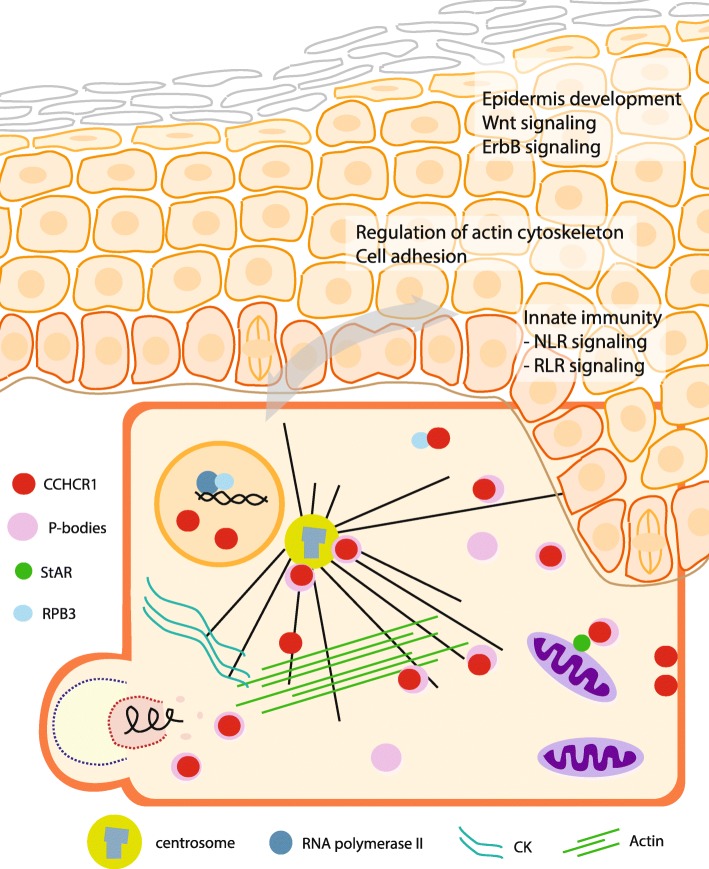Fig. 6.
Model for CCHCR1 action in a cell and skin. CCHCR1 is expressed in a basal layer of keratinocytes in the epidermis of the healthy skin. In the thickened psoriatic epidermis, it is expressed in supra-basal layers as well. It is a dynamic protein that might play a role both in the cytoplasm at the centrosomes and P-bodies that occasionally colocalize, and possibly in the nucleus as well. Both centrosomes and P-bodies are physically linked to the cytoskeleton (cytokeratin (CK), actin, and microtubules (black lines)) that functions as a scaffold for the regulation of e.g. cell division and adhesion, mRNA transport and turnover, and transport of organelles like mitochondria. The previous results and the present RNAseq suggested that CCHCR1 regulates expression of cytoskeletal components and functions related to cytoskeleton, such as cell adhesion [6]. Furthermore, CCHCR1 may control the mRNA surveillance via the P-bodies, which may affect a wide variety of biological processes. Previous studies have identified several interaction partners for CCHCR1, these including the mitochondrial StAR protein that regulates steroidogenesis [8, 11], the RNA polymerase II subunit 3 (RPB3) that regulates transcription [12], some mitotic spindle proteins [15], and several viral proteins [30]. These interactions may result from the P-body localization of CCHCR1, or from the dynamic nature of CCHCR1 and its ability to regulate various processes via cytoskeleton. RNAseq identified several pathways for CCHCR1 which are relevant for the pathogenesis of psoriatic epidermis, epidermis development, and innate immunity. Interestingly, also the innate immunity including the RIG-like receptor (RLR) signaling is affected by the P-bodies

